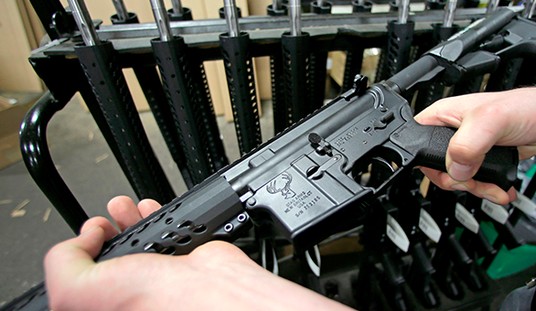A couple of years ago, bump stocks were legal but relatively uncommon. They were a gimmick, a toy that people would throw onto an AR or AK and waste ammo with it, but surprisingly few people actually bothered with them. After all, you could do the same thing with a rubber band for a fraction of the cost. Hell, you could do it with a belt loop, even.
Then Las Vegas happened.
It wasn’t long before the bump stock became demonized. Legislation was introduced to ban any device that might improve the rate of fire for a semi-automatic firearm. The Trump administration opted to have the ATF recategorize bump stocks, making them machineguns and illegal for private citizens to own.
Now, the media has set its sights on the pistol brace the Dayton shooter used on his firearm.
Even though it looked like a rifle, the gun used to kill nine people and wound at least 14 more was likely classified as a pistol, skirting around laws restricting short-barreled rifles.
Will the device on [the killer’s] weapon, called a “pistol brace,” become the next bump stock in nation’s gun control debate?
…
On Monday, Dayton Police Chief Richard Biehl said [the killer’s] gun was “modified in essence to function like a rifle” and “to avoid any legal prohibitions.” He did not specifically cite a pistol brace, but photos of the weapon released by police show one.
The federal restrictions on short-barreled rifles were enacted to stop people from making rifles, guns fired from the shoulder, more concealable. Rifles typically can fire more powerful cartridges than pistols and shoulder stocks allow the rifles to be fired more accurately.
It is illegal to own a rifle with a barrel shorter than 16 inches without paying $200 for a National Firearms Act tax stamp and completing all the related paperwork and background checks. The process is similar to legally owning a fully-automatic rifle.
It is unclear if [he] went through this process, but the firearm he used did have a barrel shorter than 16 inches.
AR-15 style firearms can be rifles or pistols. A pistol can have a short barrel, but no shoulder stock. A rifle can have a shoulder stock, but the barrel must be 16 inches or longer.
Enter the pistol brace, also known as a stabilizing brace. For all practical purposes, this device allows pistols with short barrels to have something resembling a shoulder stock.
Now, the ATF has ruled that a pistol brace cannot be held up to the shoulder. Otherwise, the weapon then becomes a short-barreled rifle (SBR) and thus prohibited. Yes, it’s a stupid ruling because, well, there’s absolutely nothing to stop someone from doing it. The only way it’s enforceable is if it’s reported or seen at a gun range.
By focusing on the pistol brace, it seems the media has decided it’s now time to go after yet another device that makes things easier for gun owners.
Unlike bump stocks, however, there are some key difference.
For one thing, there’s little evidence that having a shorter weapon contributed to the death toll in any way. Further, he could just as easily have used a more traditional handgun or even a bullpup rifle and accomplished the same thing.
For another, putting a stock on an AR-style pistol isn’t high-end gunsmithing. It can be done at your kitchen table. Most gun owners don’t do it because they’re law-abiding. However, someone who is intent on killing a pile of people isn’t likely to be hesitant to slap a stock on his pistol regardless of what the National Firearms Act has to say about it.
Plus, it’s not really relevant if anti-gunners are going to go after all ARs themselves. They’re trying to ban the weapon, not focus on an accessory that will be moot should they win.
However, don’t be surprised if they start trying to change their tune down the road should their attempts at gun banning fail.








Join the conversation as a VIP Member